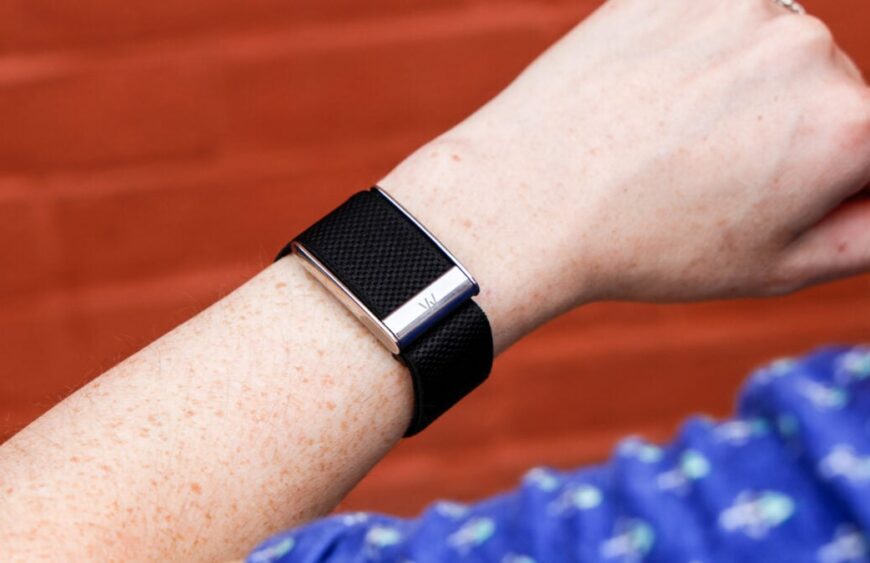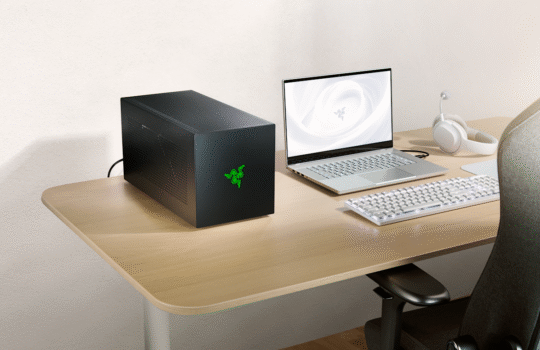The Whoop 5.0 Is a Massive Upgrade to Health Tracking. I Wasn’t Ready.

At some point in the late 2010s, I became obsessed with my heart rate. I was at a point in my fitness life that I was training for marathons and I cared a whole lot about every process involved. I spent a certain percentage of my workday staring at my heart rate on my fitness watch and feeling smug if I kept my resting heart rate below 50 beats per minute (bpm) and wigging out if it went over 60 bpm. Heart rate was my gateway drug into health tracking, and it soon devolved into an unhinged compulsion.
A couple of years in, for the sake of my mental health, I stopped tracking everything. It was liberating and freeing. Around this time, the Whoop—a fitness tracker that passively monitors heart rate, sleep, and stress, among many other things—started gaining popularity among elite and amateur athletes and other fitness enthusiasts. I tried it for a month or two, but stopped, in an attempt to remain committed to the no-fitness-tracking bit. In the meantime, Whoop has now become a fixture in the fitness space and has gone through five iterations. The latest, the Whoop 5.0 starting at $199 annually (includes a subscription), was released in May. The screenless band is a significant upgrade from earlier models, and is Whoop’s most committed attempt at putting itself in the growing longevity and anti-aging space.
Whoop 5.0
If you are serious about health tracking, Whoop 5.0 has everything you could ever want. But for most people, it might be too much information.
Pros
-
Sensor tracks a ton of useful data -
Long battery life -
Easy setup -
No distracting display
Cons
-
Might be too much data for casuals -
Requires a yearly subscription -
Uncomfortable for tiny wrists
These days, I usually (but not always) use a fitness watch (either an Apple Watch or a Garmin) to track my pace or mileage when I run, but I don’t wear it 24/7. I finally forced myself out of my retirement and dove head first back into the deep waters of health tracking with Whoop 5.0. I was so not ready.
A Subscription Is Required
Historically, fitness trackers have hinged on the ability to see whatever health stat they’re tracking—step count, heart rate, etc.—effortlessly on the device itself. The pedometer, the OG fitness tracker, for instance, was just one big number display. Heart rate monitors embedded in smartwatches clearly revealed accurate, up-to-date measurements. And no decent fitness watch couldn’t easily display a runner’s current pace and distance.
Whoop takes a different approach. The hardware has no display. It contains PPG (photoplethysmography) sensors that use infrared light, which is absorbed by hemoglobin in the blood, to capture changes in blood volume and generate an incredibly accurate estimate of a person’s heart rate as well as their heart rate variability (the variation in time between heartbeats). Like other fitness trackers, it also contains skin temperature sensors to detect sleep and accelerometers to capture activity.
Whoop uses this tech tracking to go all in on the software side of things, and all of that is embedded in the Whoop app. And that brings up a key difference between costs when you compare a Whoop to a traditional fitness tracker like a Fitbit or Garmin watch. Often, a fitness tracker is a one-time purchase kind of deal: you buy the device, you download the accompanying (often free) app, and aside from upgrading the software from time to time, you are set. Whoop works on a membership structure, which has changed over the years, but currently, it uses tiered subscription plans. With the new Whoop 5.0, $199 gets you the band and a Whoop One subscription, which provides sleep, strain, and recovery insights, personalized coaching, VO2 Max and heart rate zones, and women’s hormonal insights. The Whoop Peak plan, at $239 per year, adds healthspan and pace of aging, health monitor with health alerts, and real-time stress monitoring. Finally, Whoop Life, at $359 per year, has its own band—the Whoop Peak (different from the Whoop 5.0)—which allows for monitoring blood pressure, though this is still in beta testing, as well as electrocardiogram (ECG) readings and irregular heart rhythm notifications.
What It’s Like to Wear and Use

The key aspect of a Whoop is that in order to unlock all of the benefits listed above, you must wear it 24/7. Literally. You cannot take it off. Not even for a shower. In fact, if you do deign to take a break, the Whoop app will send consistent and persistent notifications that you are slacking off, and it won’t be able to obtain the most accurate results it can without you wearing it.
I found this aspect difficult, especially in the first week. I didn’t love having to wear it all the time, especially after a hot, humid summer workout. And in general, I don’t find the Whoop 5.0 band to be all that comfortable. Getting the band on is also not intuitive. You have to lift the metal buckle up, then slide it onto your wrist. If you don’t, from experience, it will be almost impossible to wrangle it onto your wrist—to the point where you probably won’t want to ever take it off. I remember all of these issues from a few years ago when I tried the Whoop 2.0, which felt completely too large for my tiny wrist.

Sometimes I would find it so uncomfortable in the middle of the night that, in a sleep stupor, I would take it off without even realizing I was doing so. (While I am not the majority here, I am also not the only person to find the Whoop band uncomfortable.) Technically, you can wear the band on your bicep, too, and it still provides accurate measurements, but I didn’t find that to be all that comfortable either, and a bicep fitness band isn’t the vibe I personally always want to be going for (though never ever any judgment, of course).
Wearing it did get easier as the days went on, and compared to the earlier version of Whoop I tried and the 4.0, the 5.0 sensor is smaller. The smaller size did seem to make it more comfortable. Without a screen of any kind, the battery life is amazing; my Whoop 5.0 lasted a full 12 days of continued use (and it only takes a couple hours to recharge). There are two ways to charge the Whoop 5.0. A basic charger that plugs right into a USB-C will juice up the device in 152 minutes, while a wireless power pack attaches to the device on your wrist and will charge the device in 110 minutes (according to Whoop) without needing to actually take the Whoop off (they really do want you to keep it on forever).
So Much Data It Can Be Overwhelming Sometimes

If you wear the Whoop 5.0 all the time as prescribed, the device does give you a cool window into your health. But it takes time. During the first couple of days to weeks, it is in a kind of calibration mode where it needs time to gather more and more data about your body. But by two weeks in, it gives you a more detailed sleep analysis as well as a strain, sleep, and recovery score. By three weeks in, if you have the Peak Plan, you’ll access healthspan, which gives you a biological age score, among other things.
To be honest, I found a lot of this information both over and underwhelming. The sheer amount of it all can feel very daunting to look at, especially if you don’t have a lot of time carved out in the day to devote to digesting it all. Additionally, as I alluded to earlier, having come from a solid break from health tracking, I found I wasn’t sure I needed or wanted all of this information again. For example, when it comes to sleep analysis, I pretty much knew, without having to look at the Whoop app, if I had a good night of sleep or not.
Perhaps Whoop’s biggest selling point, especially from a fitness perspective, is its strain score, which uses a variety of factors, including your exertion and recovery, to give you a daily number, which varies from 1 to 21. Each day’s score will not only reflect the amount of physical activity you did, but also how much sleep, for example, you got the night before. That is perhaps the part that I did find most fun and addicting. And I would surmise if I were training for something like a marathon or starting or maintaining a weight-lifting program—and was serious about it—that’s where the Whoop 5.0 would come in most handy.
Will the Whoop 5.0 Help Me Live to 100?

The premise of Whoop is that you should continue to wear the sensor 24/7 and, in doing so, you continue to know your body better and better over time AND are able to use the data to live a healthier life. And there are plenty of devoted Whoop users who do this. But how that translates into better health is far murkier. Very few studies have been done that investigated a connection between wearing the Whoop and gaining better health or fitness metrics. And the ones that have been done—including this study, published in April in the journal Sensors, which found that wearing the Whoop consistently was associated with a lower resting heart rate and a higher heart rate variability as well as better sleep and activity metrics—were funded by Whoop itself.
“These findings provide compelling initial evidence that consistent engagement with Whoop is linked to physiological and behavioral benefits,” the study authors concluded. The results were based on long-term data from more than 10,000 users. This brings up another inherent difficulty in studying these devices, and that’s that the population of people who choose to use a device like Whoop are typically those who are already heavily invested in improving their health. That makes it difficult to tease apart which improvements were from wearing the Whoop consistently and which ones were from being a health-conscious person who will choose a lifestyle that is good for their health.
That aside, there is something to be said for wearing a device that passively tracks numerous health metrics without having to think about them every time you look down at your wrist. And you can’t really get that on any other fitness device. Even if you don’t utilize all of the health metrics Whoop offers, it could still be worth it to get insight into your health without having your heart rate staring at you in your face every time you look at your wrist.
Trending Products






